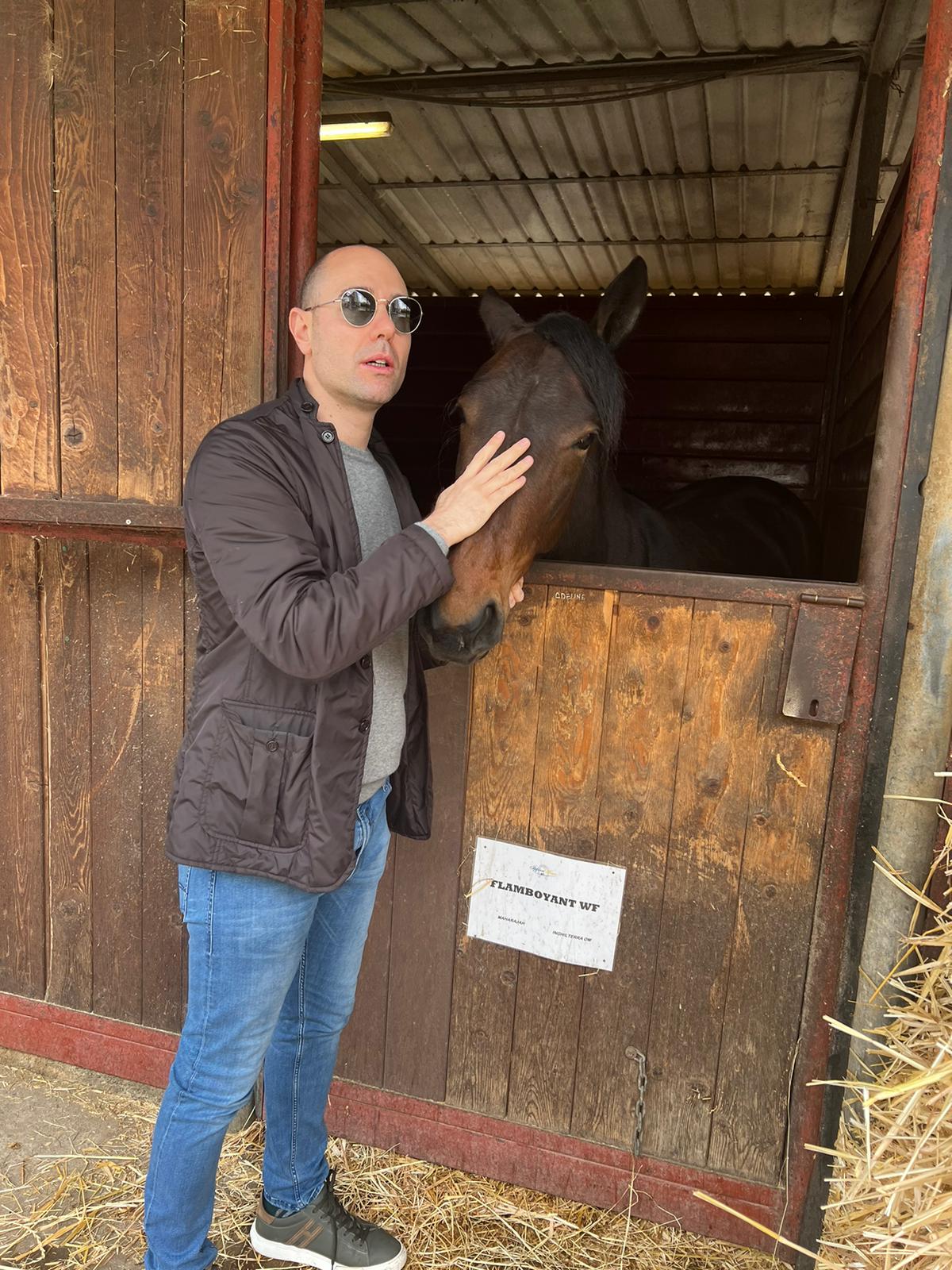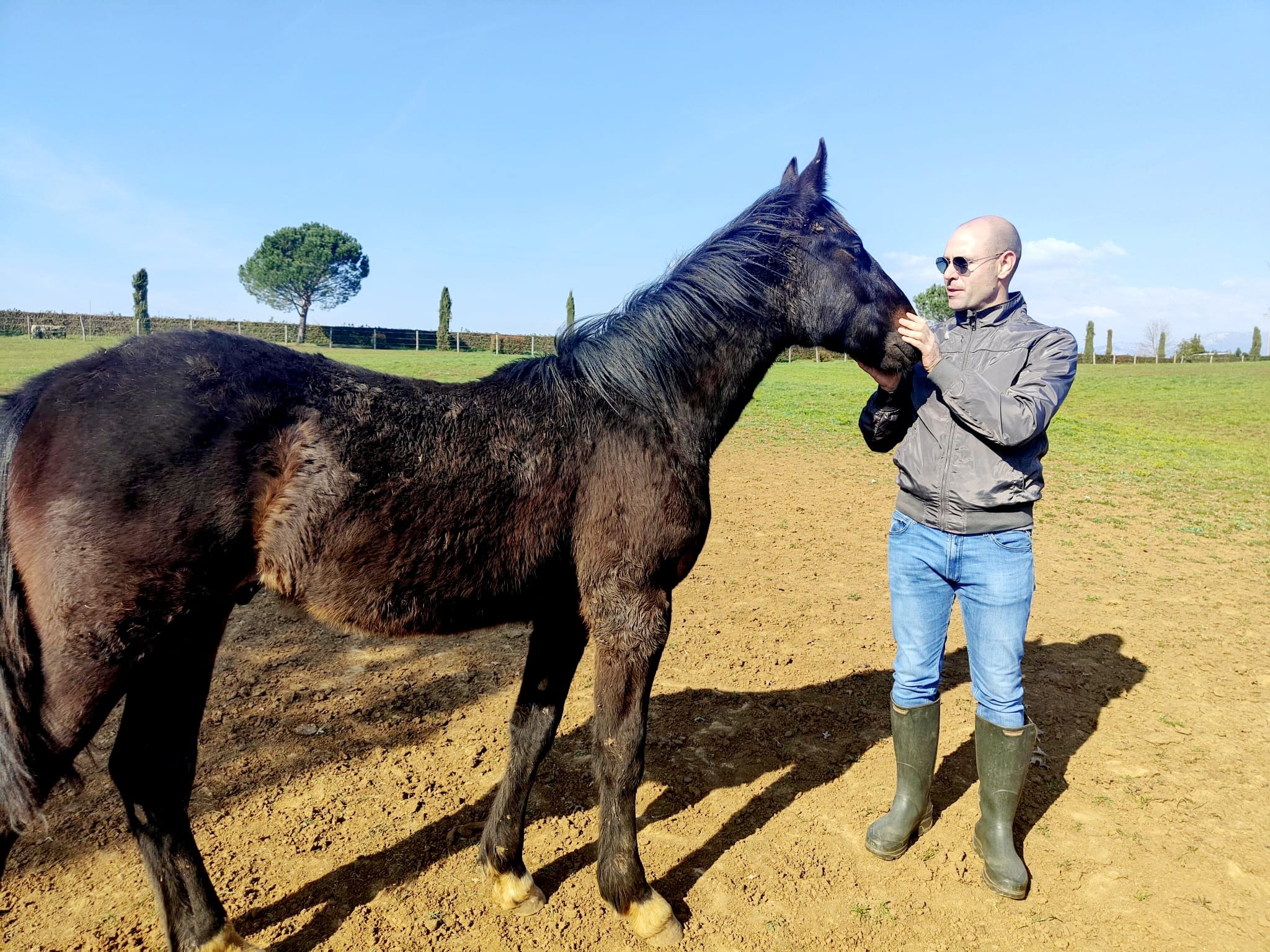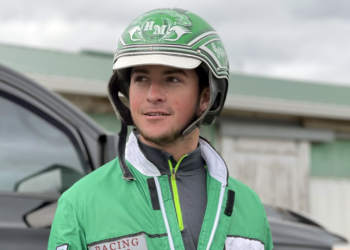The breeding of harness racing trotting horses in Italy is constantly evolving, it is no coincidence that the Italian breeding is to be considered at this time and for some years now, one of the best in the world capable of giving life to horses capable of win on tracks around the world.
Leaving aside the phenomenal Varenne, in recent decades the Italian stud farm has produced classic winning horses all over the world, just think for example of Exploit Caf, or Zacon Gio and how can you not take a look at Vivid Wise AS. This is just to name a few.

Also, from the point of view of people, Italian breeding is growing with young breeders capable of already obtaining excellent results with horses raised by themselves. This is the case, for example, of Francesco Morozzi.
Born in 1985, Francesco who will be the interlocutor of the interview that we are going to expose below, has carried in his veins the passion for horses since he was a child or since his father, in the 80s, ran a small stud farm of only one or two mares:
“These were a few mares that I could say that we kept almost at home until we decided in the early years of the new millennium to extend our business to a stud farm in Genazzano,” Morozzi said. “A town not far from Rome.
“The size of the breeding has grown little by little up to the current 22 hectares,” Morozzi explained. “Since then, our mares have started to grow numerically more and more. First three, then four, up to the current 30.”
However, something happened in the life of the young Francesco which soon left him alone in charge of a small company which, for a still very young boy, must not have been easy to carry on even if, as in his case, it is a passion:

“In March 2021 my dad died,” Morozzi sadly said. “Up to that moment, the breeding consisted of about 25 mares with the aim of giving birth to 10 or 12 foals a year. The stallions we used at that time were still of a range that I could define as average.
“Our best generation at the moment is the one that is in Italy is identified with the letter C,” Morozzi explained. “Therefore, we are talking about the current five-year-old horses. A season that saw Capital Mail as the best exponent.”
In fact, the son of Nad Al Sheba bred by Francesco Morozzi has obtained up to now interesting classic placings in Italy with the training of Mario Minopoli while since he was transferred to France under the employ of Fabrice Souloy, the horse has obtained other important placings classics but having to choose the most important one, we cannot fail to mention the third place in the Lotteria di Agnano Grand Prix.
In this regard, I asked Francesco how he experienced the day of May 1st in Naples:
“I had confidence because I had learned from the team that the horse was fine,” Morozzi said. “After the first heat I won with a lot of conviction, I really believed in winning the final too, but I have to admit that I’m equally happy. We lost to Vernissage Grif; a horse currently too strong. The only regret was losing second place by just a nostril.”
Closing the Capital Mail parenthesis, let’s go back to our conversation to understand how a rapidly expanding stud farm like Francesco’s focuses its attention when the time comes to buy a mare:
“Mare purchases can take place in Italy but also abroad,” Morozzi added. “For example, through the Swedish Travera auctions. When I place my attention on a mare, I put myself in the shoes of an owner trying to figure out if a prospective owner would be interested in buying that mare’s son if married to a good stallion. If instinct tells me to proceed, then I proceed.
“In any case, Morozzi said. “I must also confess that the customers who buy my young foals from me also become my friends over time and in this regard, when I have to make a purchase, I try to understand something even from their ideas.
“The same thing occurs when I have to choose the stallions,” Morozzi added. “I always think about what an owner wants to find in my breeding and it’s useless to hide, currently the stallions are more or less those five or six best known and most appreciated horses.”

In the daily life of a farmer, it is useless to hide that there is also a large component of dreams. A young breeder like Francesco, even if by now is already used to getting good results, will certainly have horses with which he trusts to get good results for the future, and this is the question I try to ask him. He replies confidently:
“Dakovo Mail (Nad Al Sheba) is four years old and already has some classic acquaintances,” Morozzi explained. “Some even with good results. It has recently been transferred to Noceto in the stable of Alessandro Gocciadoro and I think he has the requisites to aspire to some important races such as the Derby for example.
“I can also say the same for Eres Dorial Mail (Oropuro Bar) that he is doing very well under the orders of the Bellei team, and his last performance is a good victory in Milan,” Morozzi said. “Among the very young, I believe that some subjects are hidden on which I really place important expectations. I can mention Force Mail (Maharajah) trained by Tiberio Cecere and Filly Mail (Readly Express) trained by Mauro Baroncini.”
Here we conclude the technical discussion with Francis and open a parenthesis relating to his political commitment.
Francesco is in fact the Vice-President of ANACT, the Italian Association of Breeders:
“It is an important and onerous commitment,” Morozzi explained. “We are currently engaged in the reorganization of the auctions which I believe are an important event for breeders and their customers, we are also working to enhance the Anact Grand Prix where we have increased the prize money to 200,000 euros in each event which will involve not only the foals, but also four-year-old horses, giving an important boost to the sales of foals as well.”
by Filippo Lago, for Harnesslink
If you have any questions or story ideas for Filippo Lago, please email him at lagofilippo0@gmail.com.

 USA
USA Canada
Canada Australia
Australia New Zealand
New Zealand Europe
Europe UK / IRE
UK / IRE



